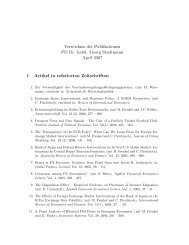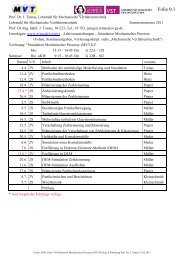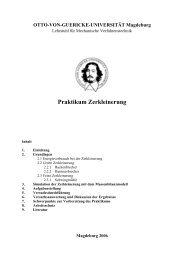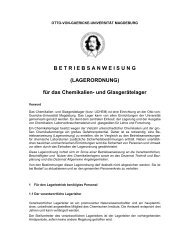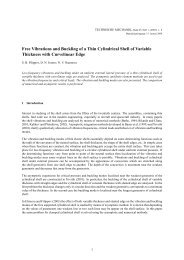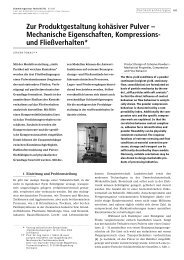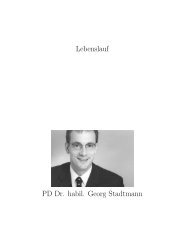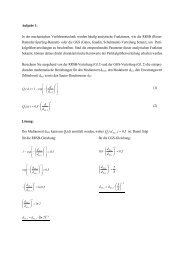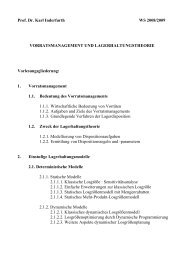Mechanics of nanoparticle adhesion â A continuum approach
Mechanics of nanoparticle adhesion â A continuum approach
Mechanics of nanoparticle adhesion â A continuum approach
You also want an ePaper? Increase the reach of your titles
YUMPU automatically turns print PDFs into web optimized ePapers that Google loves.
<strong>Mechanics</strong> <strong>of</strong> <strong>nanoparticle</strong> <strong>adhesion</strong> — A <strong>continuum</strong> <strong>approach</strong> 19H 12 ,KH=H0+K⋅ VdW= ⋅ 12 +6 a a00F F A pC ⋅r 2⋅h ⋅ (38)The distance a 0 denotes a characteristic <strong>adhesion</strong> separation. If stiff molecularinteractions are provided (no compression <strong>of</strong> electron sheath), this separation a 0was assumed to be constant during contact loading. By addition the elastic repulsion<strong>of</strong> the solid material according to Hertz, Eq. (7), to this attraction force, Eq.(38), and by deriving the total force F tot with respect to h K , the maximum <strong>adhesion</strong>force was obtained as absolute valueF2CH⋅r12 ,2⋅CH⋅r12,Hmax ,= ⋅ 1+2 26⋅ a * 70 27⋅E ⋅a0which occurs at the center <strong>approach</strong> <strong>of</strong> the spheres [52]:h2CH⋅r12,Kmax ,=* 2 69⋅E⋅a0, (39)(40)But as mentioned before, this increase <strong>of</strong> contact area with elastic deformationdoes not lead to a significant increase <strong>of</strong> attractive <strong>adhesion</strong> force. The reversibleelastic repulsion restitutes always the initial contact configuration. The practicalexperience with the mechanical behavior <strong>of</strong> fine powders shows that an increase<strong>of</strong> <strong>adhesion</strong> force is influenced by an irreversible or “frozen” contact flatteningwhich depends on the external force F N [57].Generally, if this external compressive normal force F N is acting at a single s<strong>of</strong>tcontact <strong>of</strong> two isotropic, stiff, smooth, mono-disperse spheres the previous contactpoint is deformed to a contact area, Fig. 1a to Fig. 2c, and the <strong>adhesion</strong> force betweenthese two partners increases, see in Fig. 3 the so-called “<strong>adhesion</strong> boundary”for incipient contact detachment. During this surface stressing the rigid particleis not so much deformed that it undergoes a certain change <strong>of</strong> the particleshape. In contrast, s<strong>of</strong>t particle matter such as biological cells or macromolecularorganic material do not behave so.For s<strong>of</strong>t contacts Rumpf et al. [62] have developed a constitutive model <strong>approach</strong>to describe the linear increase <strong>of</strong> <strong>adhesion</strong> force F H , mainly for plastic contactdeformation:( ) pVdW pVdWFH = 1+ ⋅ FH0 + ⋅ FN = 1+ κp ⋅ FH0 + κp⋅F(41)N pf pfWith analogous prerequisites and derivation, Molerus [14] obtained an equivalentexpression:



